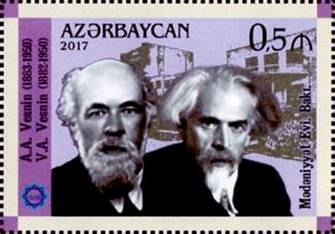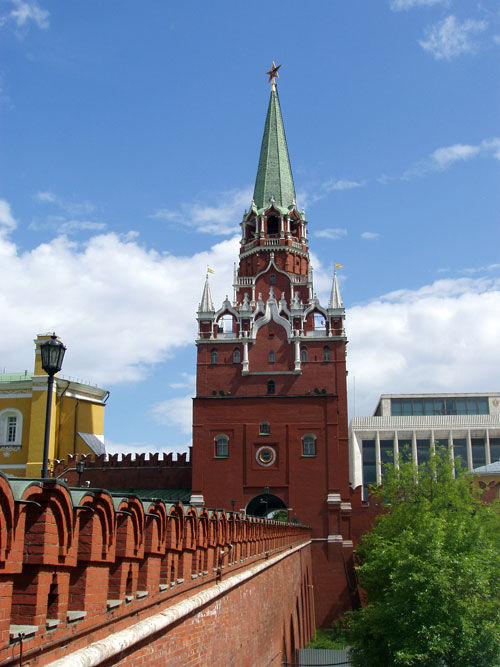|
Leonid Vesnin
Leonid Aleksandrovich Vesnin (Леони́д Александрович Веснин; 28 November .S. 10 December1880 – 8 October 1933), was a Russian and Soviet architect. The oldest of Vesnin brothers, who were influential in developing Constructivist architecture. Biography Leonid Aleksandrovich was born on 28 November .S. 10 December1880 in a merchant family in Nizhny Novgorod. He went to Moscow Practical Academy of Commercial Sciences from 1890 to 1899. In 1900 he got into Imperial Academy of Arts and was a student of Leon Benois until he graduated in 1909. Selected work *1934 People's Commissariat of Heavy Industry Project *1930 Palace of Culture of the Proletarskie district, Moscow *1928 House of Film Actors, Moscow *1926 Mostorg Department store, Moscow *1924 Leningradskaya Pravda project *1922-23 Palace of Labor project [...More Info...] [...Related Items...] OR: [Wikipedia] [Google] [Baidu] |
Old Style
Old Style (O.S.) and New Style (N.S.) indicate dating systems before and after a calendar change, respectively. Usually, this is the change from the Julian calendar to the Gregorian calendar as enacted in various European countries between 1582 and 1923. In England, Wales, Ireland and Britain's American colonies, there were two calendar changes, both in 1752. The first adjusted the start of a new year from Lady Day (25 March) to 1 January (which Scotland had done from 1600), while the second discarded the Julian calendar in favour of the Gregorian calendar, removing 11 days from the September 1752 calendar to do so.Spathaky, MikOld Style and New Style Dates and the change to the Gregorian Calendar "Before 1752, parish registers, in addition to a new year heading after 24th March showing, for example '1733', had another heading at the end of the following December indicating '1733/4'. This showed where the Historical Year 1734 started even though the Civil Year 1733 continued u ... [...More Info...] [...Related Items...] OR: [Wikipedia] [Google] [Baidu] |
1880 Births
Year 188 (CLXXXVIII) was a leap year starting on Monday of the Julian calendar. At the time, it was known in the Roman Empire as the Year of the Consulship of Fuscianus and Silanus (or, less frequently, year 941 ''Ab urbe condita''). The denomination 188 for this year has been used since the early medieval period, when the Anno Domini calendar era became the prevalent method in Europe for naming years. Events By place Roman Empire * Publius Helvius Pertinax becomes pro-consul of Africa from 188 to 189. Japan * Queen Himiko (or Shingi Waō) begins her reign in Japan (until 248). Births * April 4 – Caracalla (or Antoninus), Roman emperor (d. 217) * Lu Ji (or Gongji), Chinese official and politician (d. 219) * Sun Shao, Chinese general of the Eastern Wu state (d. 241) Deaths * March 17 – Julian, pope and patriarch of Alexandria * Fa Zhen (or Gaoqing), Chinese scholar (b. AD 100) * Lucius Antistius Burrus, Roman politician (executed) * Ma Xiang, Chin ... [...More Info...] [...Related Items...] OR: [Wikipedia] [Google] [Baidu] |
Soviet Architects
This is a list of architects of the Russian Federation, Soviet Union, Russian Empire, Tsardom of Russia and Grand Duchy of Moscow, both ethnic Russians and people of other ethnicities. This list also includes those who were born in the ///Tsardom of Russia/Grand Duchy of Moscow but later emigrated, and those who were born elsewhere but immigrated to the country and/or worked there for a significant period of time. Attested biographies of architects in Russian history date back to 1475, when Aristotile Fioravanti, a native of Bologna, arrived in Moscow to build the Dormition Cathedral of the Moscow Kremlin. Foreign architects had a notable place in Russian and Soviet history, especially in the last quarter of the 18th century ( Charles Cameron, Bartolomeo Rastrelli, Carlo Rossi and others) and in the first quarter of the 20th century ( Mies van der Roe, Erich Mendelsohn, Ernst May and others). This list includes foreign architects whose primary, and most tangible work materialize ... [...More Info...] [...Related Items...] OR: [Wikipedia] [Google] [Baidu] |
Russian Avant-garde
The Russian avant-garde was a large, influential wave of avant-garde modern art that flourished in the Russian Empire and the Soviet Union, approximately from 1890 to 1930—although some have placed its beginning as early as 1850 and its end as late as 1960. The term covers many separate, but inextricably related, art movements that flourished at the time; including Suprematism, Constructivism, Russian Futurism, Cubo-Futurism, Zaum and Neo-primitivism. Many of the artists who were born, grew up or were active in what is now Belarus and Ukraine (including Kazimir Malevich, Aleksandra Ekster, Vladimir Tatlin, Wassily Kandinsky, David Burliuk, Alexander Archipenko), are also classified in the Ukrainian avant-garde. The Russian avant-garde reached its creative and popular height in the period between the Russian Revolution of 1917 and 1932, at which point the ideas of the avant-garde clashed with the newly emerged state-sponsored direction of Socialist Realism. Artists and de ... [...More Info...] [...Related Items...] OR: [Wikipedia] [Google] [Baidu] |
Russian Architects
This is a list of architects of the Russian Federation, Soviet Union, Russian Empire, Tsardom of Russia and Grand Duchy of Moscow, both ethnic Russians and people of other ethnicities. This list also includes those who were born in the ///Tsardom of Russia/Grand Duchy of Moscow but later emigrated, and those who were born elsewhere but immigrated to the country and/or worked there for a significant period of time. Attested biographies of architects in history of Russia, Russian history date back to 1475, when Aristotile Fioravanti, a native of Bologna, arrived in Moscow to build the Dormition Cathedral, Moscow, Dormition Cathedral of the Moscow Kremlin. Foreign architects had a notable place in Russian and Soviet Union, Soviet history, especially in the last quarter of the 18th century (Charles Cameron (architect), Charles Cameron, Bartolomeo Rastrelli, Carlo Rossi (architect), Carlo Rossi and others) and in the first quarter of the 20th century (Ludwig Mies van der Rohe, Mies van ... [...More Info...] [...Related Items...] OR: [Wikipedia] [Google] [Baidu] |
Modernist Architects
Modern architecture, or modernist architecture, was an architectural movement or architectural style based upon new and innovative technologies of construction, particularly the use of glass, steel, and reinforced concrete; the idea that form should follow function ( functionalism); an embrace of minimalism; and a rejection of ornament. It emerged in the first half of the 20th century and became dominant after World War II until the 1980s, when it was gradually replaced as the principal style for institutional and corporate buildings by postmodern architecture. Origins File:Crystal Palace.PNG, The Crystal Palace (1851) was one of the first buildings to have cast plate glass windows supported by a cast-iron frame File:Maison François Coignet 2.jpg, The first house built of reinforced concrete, designed by François Coignet (1853) in Saint-Denis near Paris File:Home Insurance Building.JPG, The Home Insurance Building in Chicago, by William Le Baron Jenney (1884) File:Const ... [...More Info...] [...Related Items...] OR: [Wikipedia] [Google] [Baidu] |
Constructivist Architects
Constructivism may refer to: Art and architecture * Constructivism (art), an early 20th-century artistic movement that extols art as a practice for social purposes * Constructivist architecture, an architectural movement in Russia in the 1920s and 1930s Education * Constructivism (philosophy of education), a theory about the nature of learning that focuses on how humans make meaning from their experiences * Constructivism in science education * Constructivist teaching methods, based on constructivist learning theory Mathematics * Constructivism (philosophy of mathematics), a logic for founding mathematics that accepts only objects that can be effectively constructed * Constructivist type theory Philosophy * Constructivism (philosophy of mathematics), a philosophical view that asserts the necessity of constructing a mathematical object to prove that it exists * Constructivism (philosophy of science), a philosophical view maintaining that science consists of mental constructs cre ... [...More Info...] [...Related Items...] OR: [Wikipedia] [Google] [Baidu] |
Architects From The Russian Empire
An architect is a person who plans, designs and oversees the construction of buildings. To practice architecture means to provide services in connection with the design of buildings and the space within the site surrounding the buildings that have human occupancy or use as their principal purpose. Etymologically, the term architect derives from the Latin ''architectus'', which derives from the Greek (''arkhi-'', chief + ''tekton'', builder), i.e., chief builder. The professional requirements for architects vary from place to place. An architect's decisions affect public safety, and thus the architect must undergo specialized training consisting of advanced education and a ''practicum'' (or internship) for practical experience to earn a license to practice architecture. Practical, technical, and academic requirements for becoming an architect vary by jurisdiction, though the formal study of architecture in academic institutions has played a pivotal role in the development of the ... [...More Info...] [...Related Items...] OR: [Wikipedia] [Google] [Baidu] |
Academic Staff Of Bauman Moscow State Technical University
An academy (Attic Greek: Ἀκαδήμεια; Koine Greek Ἀκαδημία) is an institution of secondary or tertiary higher learning (and generally also research or honorary membership). The name traces back to Plato's school of philosophy, founded approximately 385 BC at Akademia, a sanctuary of Athena, the goddess of wisdom and skill, north of Athens, Greece. Etymology The word comes from the ''Academy'' in ancient Greece, which derives from the Athenian hero, ''Akademos''. Outside the city walls of Athens, the gymnasium was made famous by Plato as a center of learning. The sacred space, dedicated to the goddess of wisdom, Athena, had formerly been an olive grove, hence the expression "the groves of Academe". In these gardens, the philosopher Plato conversed with followers. Plato developed his sessions into a method of teaching philosophy and in 387 BC, established what is known today as the Old Academy. By extension, ''academia'' has come to mean the accumulation, dev ... [...More Info...] [...Related Items...] OR: [Wikipedia] [Google] [Baidu] |
1933 Deaths
Events January * January 11 – Sir Charles Kingsford Smith makes the first commercial flight between Australia and New Zealand. * January 17 – The United States Congress votes in favour of Philippines independence, against the wishes of U.S. President Herbert Hoover. * January 28 – "Pakistan Declaration": Choudhry Rahmat Ali publishes (in Cambridge, UK) a pamphlet entitled ''Now or Never; Are We to Live or Perish Forever?'', in which he calls for the creation of a Muslim state in northwest India that he calls " Pakstan"; this influences the Pakistan Movement. * January 30 ** National Socialist German Workers Party leader Adolf Hitler is appointed Chancellor of Germany by President of Germany Paul von Hindenburg. ** Édouard Daladier forms a government in France in succession to Joseph Paul-Boncour. He is succeeded on October 26 by Albert Sarraut and on November 26 by Camille Chautemps. February * February 1 – Adolf Hitler gives his "Proclamation to ... [...More Info...] [...Related Items...] OR: [Wikipedia] [Google] [Baidu] |
Canadian Centre For Architecture
The Canadian Centre for Architecture (CCA; french: Centre Canadien d'Architecture) is a Architecture museum, museum of architecture and research centre in Montreal, Quebec, Canada. It is located at 1920, rue Baile (1920, Baile Street), between rue Fort (Fort Street) and rue Saint-Marc (Saint-Marc Street) in what was once part of the Golden Square Mile. Today, it is considered to be located in the Shaughnessy Village neighbourhood of the borough of Ville-Marie, Montreal, Ville-Marie. Phyllis Lambert is the founding director emeritus, Bruce Kuwabara is chair of the board of trustees, Giovanna Borasi is the director. It was designed and built by Peter Rose (architect), Peter Rose. The CCA contains a large library and archives, and is host to various exhibits throughout the year. It is also home to a study centre open to the general public. The CCA provides educational programs and cultural activities. The CCA also has an architectural garden located on the southern side of René L ... [...More Info...] [...Related Items...] OR: [Wikipedia] [Google] [Baidu] |


_by_Wassily_Kandinsky.jpg)



